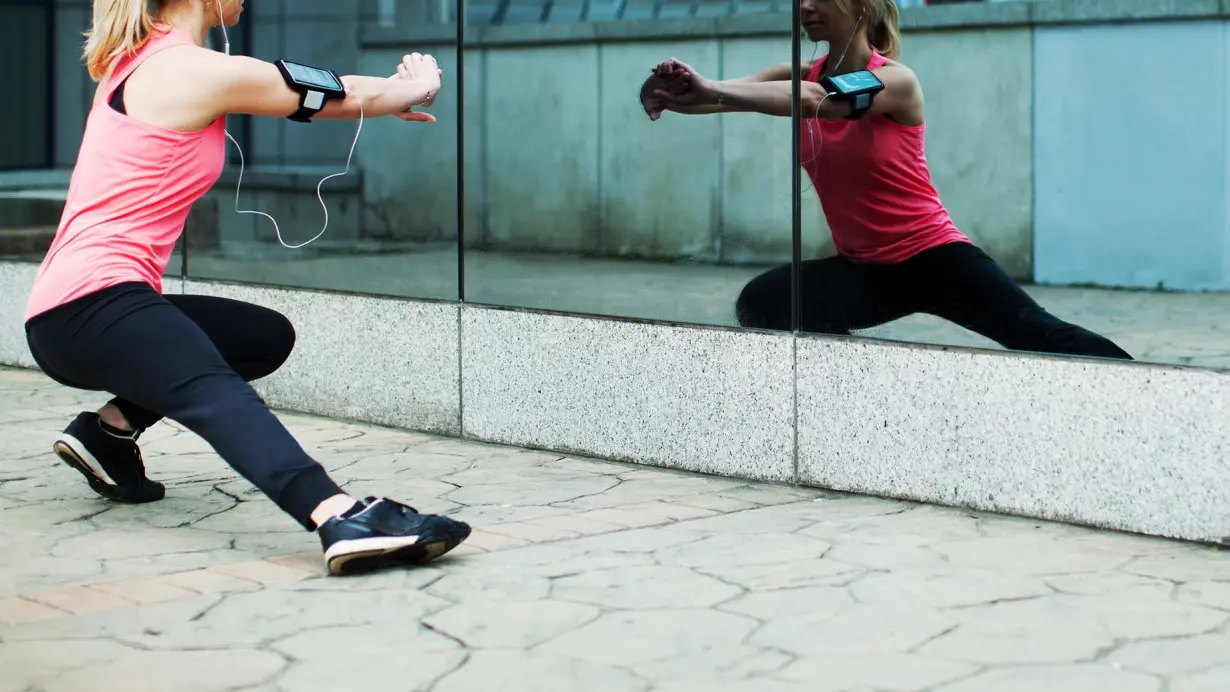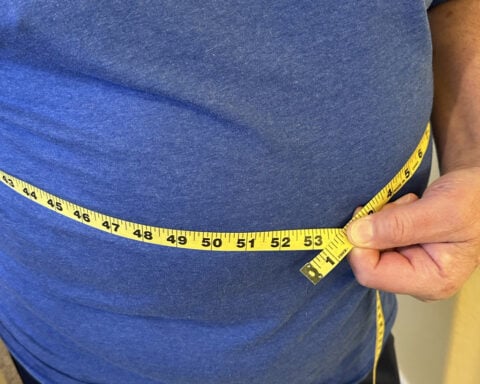(CNN) — Your body is the living, breathing vehicle you rely on to navigate your life, so maintaining mobility is an essential part of your overall well-being.
Unfortunately, one-size-fits-all workouts often fall short of delivering a functional, pain-free range of motion. The good news is that creating an effective, personalized mobility routine can be simple and time efficient.
Whether you’re a busy professional, stay-at-home parent or seasoned athlete, you can follow the 10 practical steps below to create your own custom mobility program to enhance your range of motion, reduce pain, improve stability and more.
Editor’s note: Consult with your doctor before beginning any new fitness program.
1. Assess your current mobility
To create a personalized mobility routine, it’s crucial to understand how you currently move. Working with a certified trainer or physical therapist, you can get a comprehensive Functional Movement Screen, or FMS, which is what I use to assess professional athletes. You can also do a self-assessment using simple functional exercises to evaluate your range of motion and identify limitations.
To self-assess, stand in front of a mirror and perform a variety of basic movements that incorporate the upper and lower body, such as squats, lunges and arm raises, noting any movement restrictions, imbalances or feelings of discomfort.
For more comprehensive results, assess yourself doing exercises from all six categories of functional human movement: squatting, hinging, pushing, pulling, rotating and core stabilization (see video above).
Tip: Record yourself from different angles during your assessment for a better view. Save the recordings to use for comparison as you progress in your program.
2. Identify areas of improvement
The limitations revealed in your assessment offer areas of opportunity for improvement. Identify and prioritize areas based on factors such as how often you rely on that particular area of your body to perform similar movements in daily life, the degree of limitation or imbalance you experience, and the level of discomfort you feel. If you feel acute pain, seek assistance from a health care professional before proceeding. Common areas offering opportunities for improvement include the hips and lower back.
Tip: If your balance was challenged during the assessment exercises, I recommend further assessment with a basic one-leg stand test.
3. Set goals
Setting clear goals provides direction for your mobility routine. Is there a particular task or daily activity that enhanced mobility would enable you to do better? Define two or three actionable goals that relate to the areas in need of improvement identified in the preceding step.
For example, if you found limitations in your ability to squat and you are an avid golfer who would like to improve mobility to play better, consider framing one of your goals like this: I will improve my hip mobility and knee stability to be able to squat down to pick up my ball, swing my club and walk the course with greater ease.
Tip: Setting specific goals relevant to your lifestyle will allow you to recognize your progress in daily activities more easily, increasing your motivation.
4. Choose the right exercises
Your mobility routine should include eight to 12 exercises that give your body the chance to practice a full range of motion while also zeroing in on the target areas identified in your assessment.
To address total-body mobility, focus on a variety of exercises that get you moving in all directions and take you through all three planes of motion: sagittal (forward and backward), frontal (side to side) and transverse (rotational). Then identify exercises specific to your target areas and goals. For instance, in the example provided in step three, you would want to include hip mobility and knee stability exercises to improve your squatting and golf game, such as lateral lunges, reverse lunges and box squats.
Tip: You can do an online search to determine exercises specific to your needs and goals. Staying with the same example above, you would search “hip mobility and knee stability exercises to improve squatting.” Just vet any resources to be sure they are reputable.
5. Create a routine that fits your lifestyle
Personalized mobility is much more effective and efficient than one-size-fits-all training, so you do not need to spend hours each week on it. With the right mobility plan, you can achieve results in less than an hour a week spread out over days. For instance, you could practice a 10-minute routine three times per week or a five-minute routine five times per week while also repeating two or three targeted exercises in shorter one- or two-minute spurts daily.
Tip: Your personalized mobility routine can serve as the perfect warmup before any other regular exercise program, such as strength training or cardiovascular activities.
6. Incorporate exercises into daily activities
Your mobility training should be designed to fit seamlessly into your daily life to avoid any barriers to consistency. One of the best ways to do that is through habit stacking, a technique that involves performing the desired new habit just before, during or after an ingrained habit, and pairing them together in a way that makes maintaining the new habit easier. To do this, stack your targeted mobility exercises with daily habits such as brushing your teeth, making the bed or putting on shoes.
Tip: Make stretching on your couch part of your TV-watching habit.
7. Stay consistent
Consistency is the most critical factor in seeing improvement. Set reminders on your smart devices and take the habit-stacking advice from the preceding step to integrate your mobility exercises into your daily routine. If you struggle with accountability, get a friend to practice with you.
Tip: Do not be too hard on yourself if you miss a day or two. Recommit and start fresh the next day.
8. Track your progress
Monitoring your improvements provides motivation and important insights. Use a digital diary or a notebook to track changes in your range of motion, imbalances, sensations and so on.
Tip: Reassess yourself every six to eight weeks, referring back to your original assessment recording to measure changes.
9. Adjust as needed
As you progress, it’s important to adjust your routine based on your evolving needs. If you hit a plateau, do not hesitate to modify your exercises and/or seek advice from a professional.
Tip: Be sure to update your goals as you progress or make new goals that are more appropriate as you incorporate changes in your lifestyle.
10. Celebrate your successes
Noticed any increase in range of motion? Celebrate your achievements, no matter how modest they may seem, as they signify forward momentum. Simply sticking to your routine consistently is cause for celebration.
Tip: Rewarding yourself with small gifts or indulgences for hitting milestones can reinforce positive behavior and keep you motivated.
By following these 10 steps, you can design a personalized mobility routine that fits your lifestyle, addresses your unique needs and helps you achieve lasting results. Your body will thank you for it!
The-CNN-Wire
™ & © 2024 Cable News Network, Inc., a Warner Bros. Discovery Company. All rights reserved.

 Joe Biden’s record on science and tech: Investments and regulation for vaccines, broadband, microchips and AI
Joe Biden’s record on science and tech: Investments and regulation for vaccines, broadband, microchips and AI
 Meta shift from fact-checking to crowdsourcing spotlights competing approaches in fight against misinformation and hate speech
Meta shift from fact-checking to crowdsourcing spotlights competing approaches in fight against misinformation and hate speech
 Fire tornadoes are a risk under California's extreme wildfire conditions
Fire tornadoes are a risk under California's extreme wildfire conditions
 In eyeing Greenland, Trump is echoing long-held American designs on the Arctic expanse
In eyeing Greenland, Trump is echoing long-held American designs on the Arctic expanse
 78 dead at abandoned South Africa gold mine that was scene of a standoff. Toll is expected to rise
78 dead at abandoned South Africa gold mine that was scene of a standoff. Toll is expected to rise
 Poland's leader accuses Russia of planning acts of sabotage against 'airlines around the world'
Poland's leader accuses Russia of planning acts of sabotage against 'airlines around the world'
 Jayden Daniels accomplishes a feat last done by Slinging Sammy Baugh in 1937
Jayden Daniels accomplishes a feat last done by Slinging Sammy Baugh in 1937
 Wildfires latest: A final round of dangerous fire weather and dry conditions is in the forecast
Wildfires latest: A final round of dangerous fire weather and dry conditions is in the forecast
 Kamala Harris memes questioning her cultural background highlight Americans’ contradictions with race
Kamala Harris memes questioning her cultural background highlight Americans’ contradictions with race








